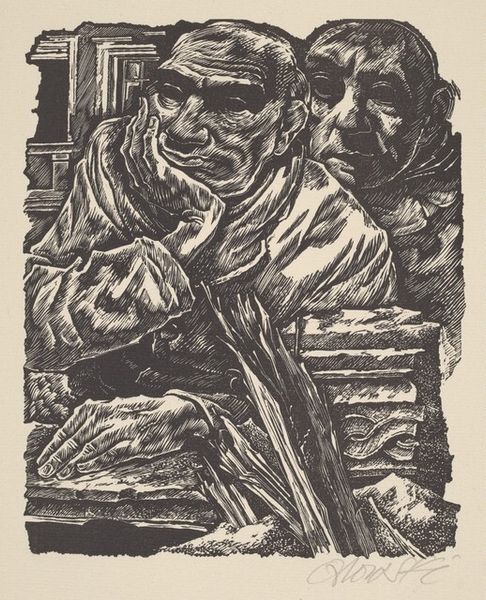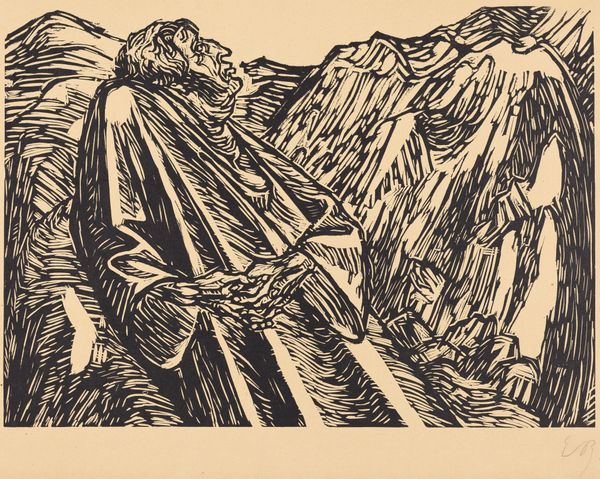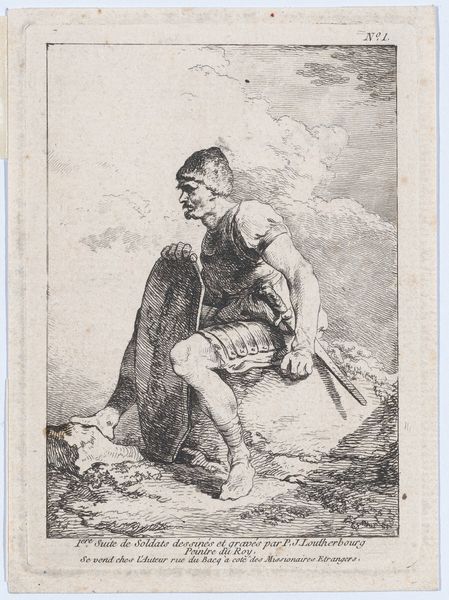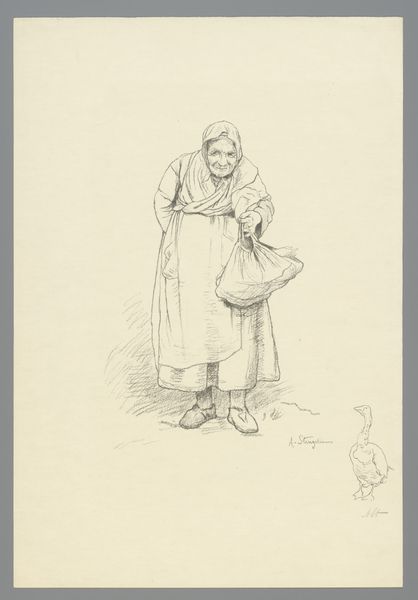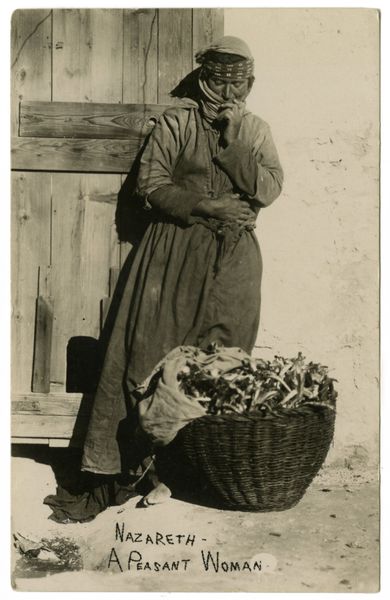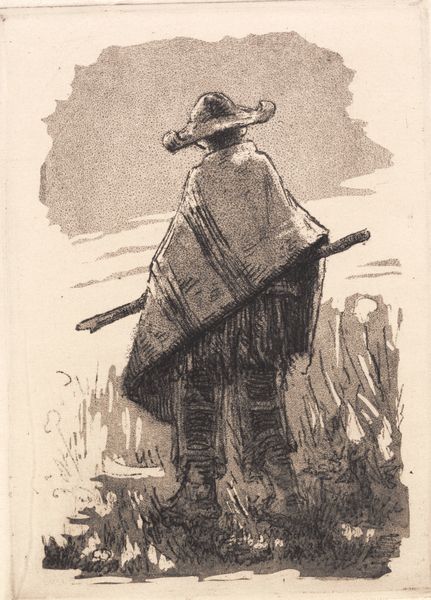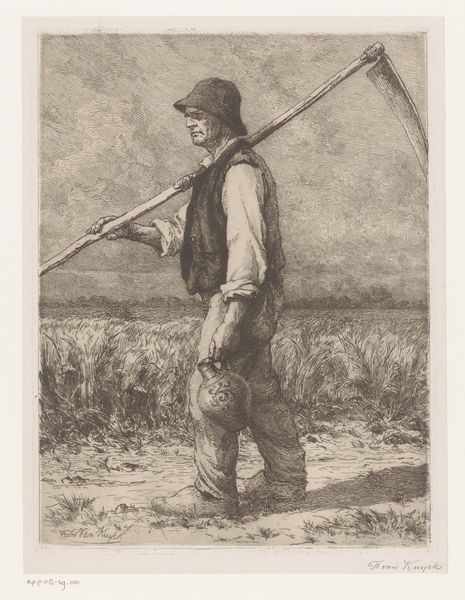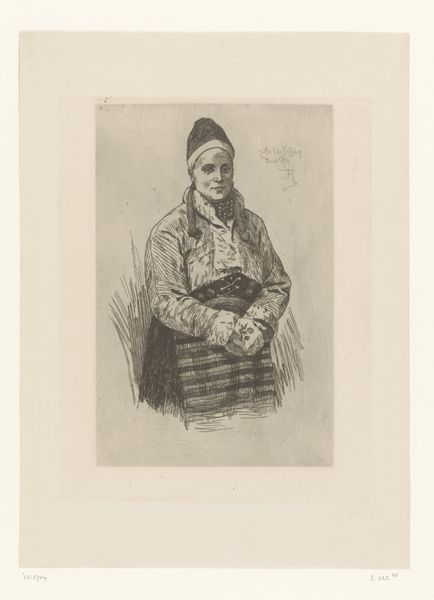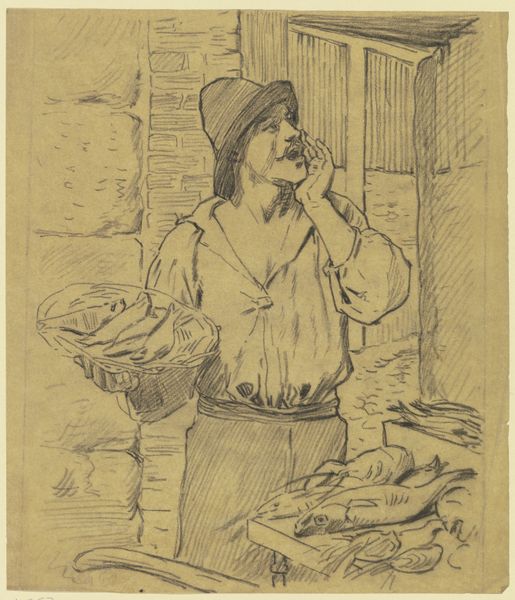
print, woodcut
#
portrait
#
narrative-art
# print
#
landscape
#
woodcut
#
realism
Copyright: Georgyi Yakutovytch,Fair Use
Curator: We're looking at Georgyi Yakutovytch's "Maria Ilyuk" from 1986, a striking woodcut print. Editor: It’s powerful. The figure emanates strength, a quiet resilience I can't quite articulate. The high contrast grabs the eye. Curator: Precisely. Notice how Yakutovytch used the woodcut medium to highlight the texture of her garments and the landscape. This medium inherently connects the artistic labor to the image’s rugged, almost austere quality. Editor: The composition guides the eye—the subject gazes towards the background, integrating her presence with the wooded hills. It appears less like a standalone portrait and more like she's a feature *in* the land. Semiotically, that stare connects her with that landscape. Curator: Yes! Consider the conditions of production. Woodcut prints allowed for broader dissemination, making art accessible to more than just elite circles. A piece like this becomes an ode to labor and representation for a working class, especially as folk art and depictions of peasantry shifted in Ukraine during this period. Editor: It is fascinating how her intricate clothing speaks to a rich visual language of adornment. Yet it is rendered starkly against a rugged background; I keep focusing on the geometric precision of the linework on her hands contrasting so heavily with the detailed carvings throughout the wood. What visual intent does that juxtaposition accomplish? Curator: Yakutovytch underscores the dignity of the individual. Each line carved in the wood mirrors a line earned by work and existence within this setting. Editor: It certainly compels viewers to contemplate her story within a landscape heavily steeped in local meaning. You start wondering who she is, and that takes you deeper than merely surface-level appreciation. Curator: Precisely, by exploring its materiality and context, the portrait opens up for so much broader investigation. Editor: Absolutely. And, when examining only the relationships of composition and figure, it transforms into a kind of symbolic topography of culture and form.
Comments
No comments
Be the first to comment and join the conversation on the ultimate creative platform.


